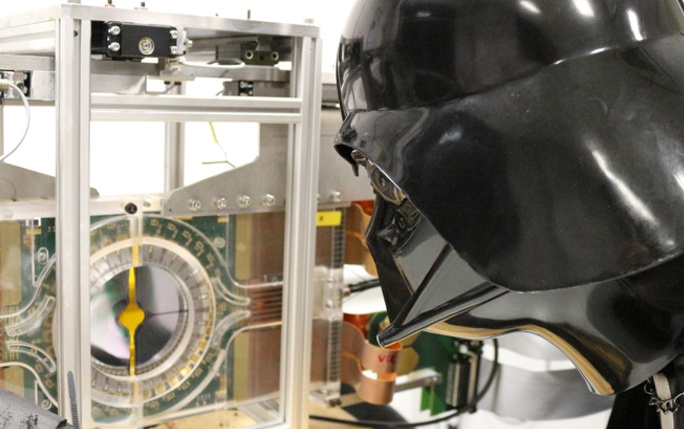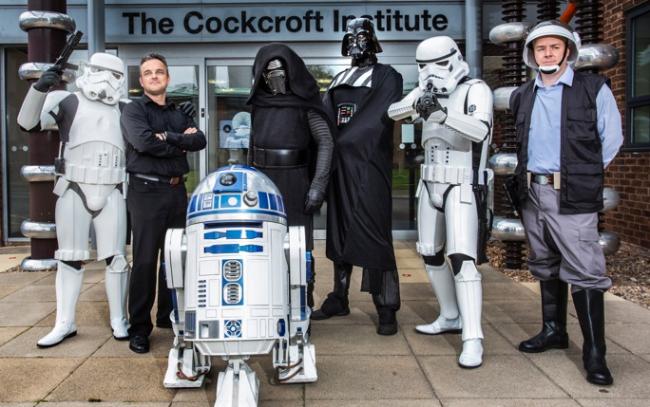The Force is strong in OMA

On 11th October 2018, the Star Wars universe came to Daresbury Laboratory. OMA Coordinator Professor Carsten Welsch gave a special staff seminar on the Physics of Star Wars. The event included hands-on demonstrations about superconducting magnets, droid races and computer games into the maximum acceleration that can be achieved using plasmas – asking questions about how fast we can accelerate macroscopic objects such as space ships with current technology. It also featured posters that linked the Star Wars universe to research currently being undertaken in his QUASAR Group. Finally, a number of Star Wars characters, including R2-D2, Darth Vader and Kylo Ren “invaded” Daresbury Lab campus and helped create a very special atmosphere.

The force was strong at Daresbury Lab on 11th October 2018.
Absolutely no seat was left and a number of staff had to stand in the back of the room when Prof Welsch started his seminar and described what is science and what is fiction in the famous movie series that started more than 40 years ago, in November 1977.
Professor Welsch first covered some basic questions related to space fights, space craft flight manoeuvres and whether one can travel through hyperspace, before continuing to show how specific aspects of the films are linked to his ongoing research programme.
A particular highlight was when he discussed the iconic scene when Luke Skywalker in 1977’s A New Hope, the very first Star Wars movie, uses proton torpedoes to destroy the Death Star and how this relates very closely to using ‘proton torpedoes’ in ion beam-based cancer therapy.
He linked this scene to the activities in the OMA project and how proton beams are used to target cancer cells hidden deep inside the body of a patient. The different imaging technologies developed by the OMA Fellows will help monitor these beams better than anything currently available, improving cancer care in the future.
It was a very special afternoon for Daresbury lab. One, that fascinated everyone for both, Star Wars and medical accelerators.
This was not an official Disney/Lucasfilm event, but planned, organised and run by Liverpool staff and students. It was supported by STFC through the Cockcroft Institute core grant and a Spark Award. The kind permission of Lucasfilm to use film excerpts as part of the seminar is acknowledged.